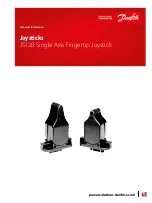Reviews:
No comments
Related manuals for AC 800M

3296
Brand: Samson Pages: 100

JS120
Brand: Danfoss Pages: 16

Remote Control
Brand: Radio Shack Pages: 3

EL Series
Brand: Balboa Instruments Pages: 10

980
Brand: Quantum Data Pages: 36

FP0 Series
Brand: Panasonic Pages: 27

CZ-64ESMC2
Brand: Panasonic Pages: 78

GM1 Series
Brand: Panasonic Pages: 98

FP0 Series
Brand: NAiS Pages: 173

SL-VGU1-EC
Brand: Panasonic Pages: 2

SR3
Brand: UniKey Pages: 20

313
Brand: Warren Controls Pages: 16

PSV5000
Brand: Data I/O Pages: 88

dap4 touch
Brand: Data Aire Pages: 13
HDR-60
Brand: Lattice Semiconductor Pages: 26

RMC-230
Brand: Datavideo Pages: 17

I-Class
Brand: Datamax Pages: 22

103E7
Brand: Danfoss Pages: 24

















